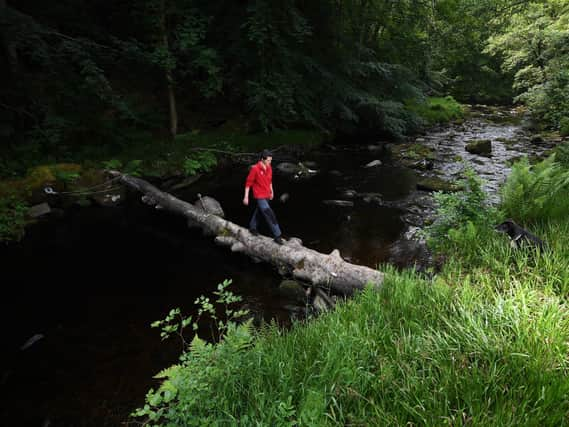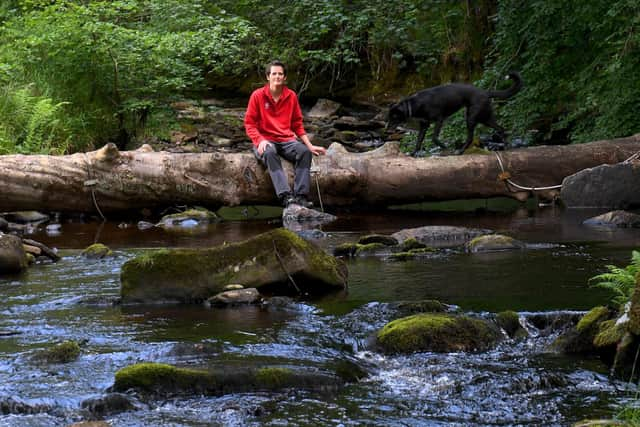How 860 dams on National Trust land at Hardcastle Crags above Hebden Bridge could protect the Calder Valley from flooding


Weather systems such as Storm Desmond in 2015 preyed on the area's unique topography to wreak havoc in towns such as Hebden Bridge, Todmorden and Mytholmroyd at the bottom of the steep-sided valleys.
Yet the impact of the extreme weather has helped to raise awareness of the effects land management has on increasing flood risk - and spurred landowners and members of the public alike to take action.
Advertisement
Hide AdAdvertisement
Hide AdThe National Trust are one of the biggest landowners in the Calder Valley, along with Yorkshire Water, and they have begun working with volunteer group Slow the Flow to install natural flood mitigation measures at sites such as Hardcastle Crags, Hebden Water and Gorple Reservoirs.


Over 800 'leaky' dams have been built in woodland and on open moorland, varying in size but with the same purpose - to slow down the flow of rainfall and avoid sudden deluges onto the settlements below.
The majority of the funding came from the West Yorkshire Combined Authority - an unusual source as they normally focus on transport schemes - with additional contributions from the government.
Project manager Rosie Holdsworth attributes its successful completion in part to the high levels of interest in environmental issues in the notoriously eco-conscious Calder Valley, with large numbers of volunteers coming forward to help.
Advertisement
Hide AdAdvertisement
Hide Ad"Flooding is a massive issue in the Calder Valley and we're very aware that there is a lot of work we can do to reduce the risk. The dam building has been so successful that we want to expand it across our and Yorkshire Water's land holdings - there are vast opportunities across the Pennine corridor, in the Wassenden Valley and up to Marsden Moor where we have been planting new woodland.


"The causes of flooding are complex and it's difficult to pinpoint one particular factor as being responsible. Soil erosion, the degradation of vegetation, loss of tree cover all contribute. But we have these steep-sided valley and huge uplands that just funnel rainfall down them really quickly. It's about playing around with the ground cover and tinkering with the things we can control."
The leaky dams are designed to hold small volumes of water over relatively short periods of time - between 12 and 24 hours - to reduce the peak of water and 'flatten the curve' before it is released down the valley. Although each structure makes only a small contribution to the effort, with 860 now in operation, they will have a cumulative effect.
The University of Leeds have been monitoring each site with time lapse cameras, and although the multiple factors at play in the River Calder's catchment mean it is difficult to assess their impact so far, the dams are working as intended.
Advertisement
Hide AdAdvertisement
Hide Ad"We've been really heartened by the support - people around here are quite aware of issues around the environment and they have felt the impact of flooding on a personal level. They want to do something themselves to help, and we've channelled that enthusiasm in a positive way."
The volunteers have now moved onto 'balsam bashing' at Hardcastle Crags - the removal of a non-native, invasive species which prevents other vegetation from growing and leaves huge slopes bare of protection or root structure, worsening soil erosion and reducing absorption.
"Hardcastle Crags was the initial project, the pilot, and now we want to roll it out on a much bigger scale and fight climate change."